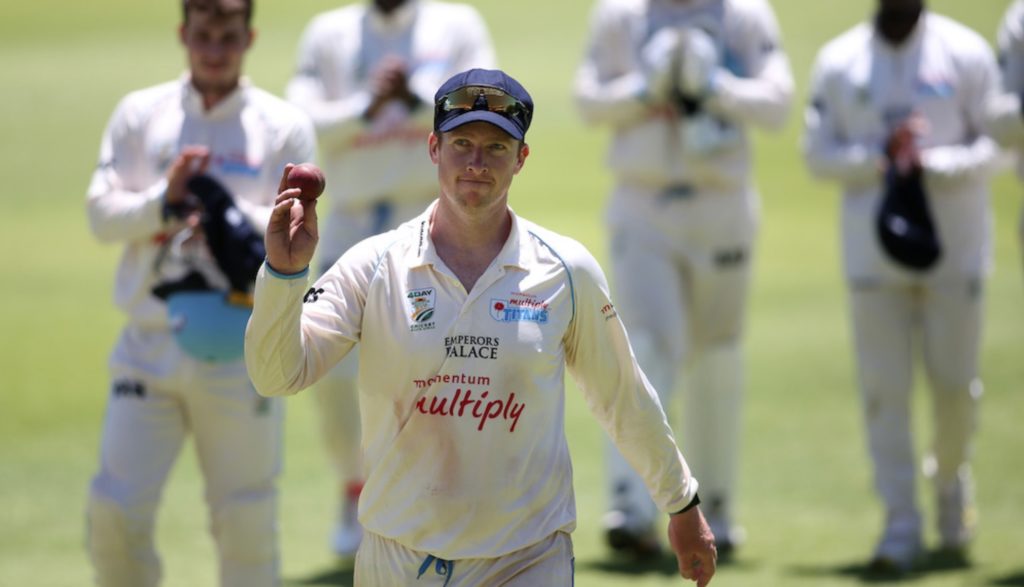Simon Harmer topped the Domestic 4-Day Series wicket-takers list and was joined by four other spinners in the top 10, writes RYAN VREDE.
A situation where 50% of the top bowlers are spinners reflects a dramatic shift in South African cricket that must be nurtured.
The revolution isn’t being televised, but it is happening. Spin bowlers making up half of the country’s leading first-class wicket-takers is telling. They did so in the 2020-21 and 2019-20 seasons as well.
The reasons for this are unclear.
Many in South Africa’s cricket fraternity have lamented what they suggest is a diminished quality of wicket curation. They argue that drier, barer wickets across the country have favoured spinners, and done so earlier than days three and four.
Some have questioned the competency of South African first-class batsmen against spin bowling, particularly on turning tracks.
However, it would be remiss not to credit some exceptionally gifted men in this season’s group of elite spinners, chief among those, Harmer.
Harmer signed a Kolpak deal with Essex in 2017 and proceeded to take 250 first-class wickets for the club. Such was his sustained dominance in the County Championship that there were talks of him qualifying to play for England.
However, that all ended when Brexit laws effectively scrapped Kolpak contracts. Harmer is signed to Essex as an overseas player but was recently selected as a backup spinner for the tour of New Zealand.
It remains to be seen when or if he will add to his five Test caps earned in 2015. Keshav Maharaj has established himself as an indispensable part of the Proteas’ bowling attack. Harmer, however, made an emphatic statement about his quality this season, taking 44 wickets (11 more than his closest competitor) at an average of 19.29.
Whether the Proteas ever play two spinners outside of the sub-continent remains to be seen. It is unlikely, particularly if neither of those is considered genuine all-rounders, as Maharaj and Harmer are not.
This doesn’t detract from the fact that there is a clutch of tweakers excelling at the domestic game’s highest level, which is a reason to celebrate.
WP’s Kyle Simmonds, who finished behind Harmer in the wicket tally, is a fine player who, at 28 years old, appears to be maturing into a prospective Test player. His threat is amplified by a high degree of competence with the bat (he averages 27 with two first-class centuries).
Shaun von Berg has had another strong season. The leg-spinner took 27 wickets for the Rocks and made some decent contributions with the bat. However, at 35, Von Berg would not be a long-term investment for the Proteas.
In this context, SWD’s left-arm spinner Sean Whitehead is the most appealling. The 25-year-old was a standout performer. He took 19 wickets fewer than Harmer but bowled a massive 177 fewer overs. His wickets came at an average of 14.95 and a strike rate of 35.30, which was unmatched by any spinner in the top 20.
Notably, Whitehead averages nearly 35 with the bat through 21 first-class innings, with a century and four fifties. This overall record, combined with his youth, suggests he is worth investing in a national context.
I’m encouraged by the trend of spinners being prominent among the leading wicket-takers in the country. This is a dramatic departure from the days when one or two pushed their cause for national honours.
How we nurture the newfound weaponry will shape the very face of South African cricket going forward.







